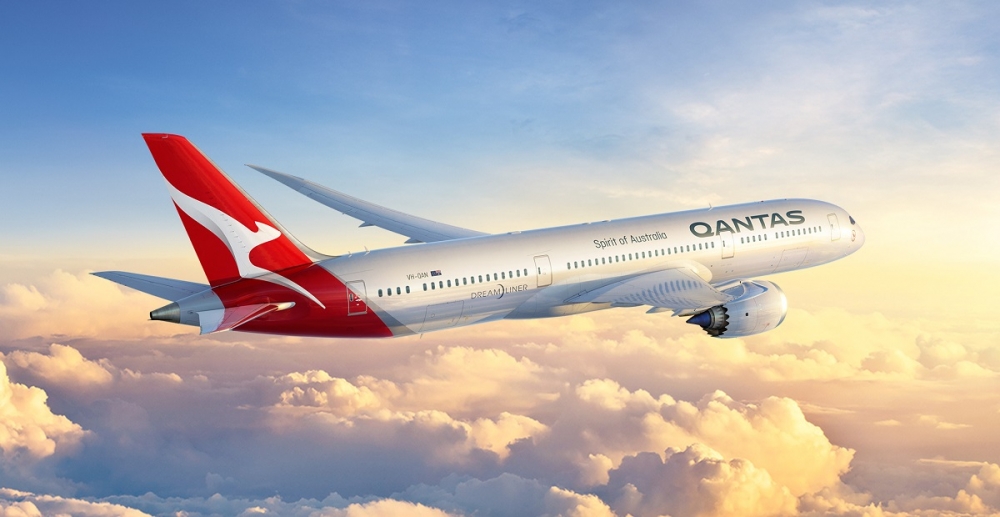QANTAS is looking for frequent flyers willing to allow wearable technology to monitor their biorhythms as part of a pioneering study into airline passenger health that is already being used to design a new in-flight menu.
The Flying Kangaroo has teamed up with the University of Sydney’s Charles Perkins Centre and a multi-disciplinary research team to help develop a new approach to long-haul travel ahead of its first Boeing 787 Dreamliner flights later this year.
The study will bring together researchers across fields such as nutrition, physical activity and sleep to map out strategies to counteract travel bugbears such as jet-lag.
It will look at issues such as onboard exercise and movement, menu design and service timing, pre- and post-flight preparation and transit lounge “wellness”.
An examination of the cabin environment will also look at how factors such as lighting and temperature affect passengers.
Qantas will be operating non-stop flights between Perth and London from March next year and between Melbourne and Los Angeles from December 15.
Read: Qantas puts its Perth-London non-stop on sale.
Using the B787 for these routes already puts it on the front foot because of the airliner’s bigger windows, lower cabin altitude, increased humidity and sophisticated lighting system.
Qantas boss Alan Joyce said the partnership aimed to develop innovations and strategies to complement the Dreamliner’s advantages.
“By taking a holistic view of our customers, our partnership will examine everything from reducing the impact of jetlag through to health, nutrition and sleep through the entire journey experience,” Joyce said in a statement.
“We’re all looking at how we can prepare passengers ahead of their long haul flight, and of course on board and when they arrive at their destinations; we want our customers to feel their best at the end of their flight with us.”
“The centre’s research has already influenced what meals and beverages we’ll be serving onboard and when, cabin lighting and temperature as well as the airport lounge experience.
“Neil Perry is working with the centre on new menus for the 787 flights so we are excited that one of Australia’s best culinary minds is teaming up with the best scientific minds to design the best possible menu to look after both health and hunger.”
Charles Perkins Centre academic director Steve Simpson said the “hugely exciting” partnership was the first time there had been an integrated multidisciplinary collaboration between an airline and a university around in-flight health and well-being beyond a medical emergency.
Professor Simpson said there was a potential for “extraordinary health, science and engineering discoveries and innovations” to come out of the partnership that could benefit airlines worldwide.
He said the project would explore what long-haul travel did to the body-clocks of passengers and how airline service delivery could be changed to help passengers ease into the destination time zone. Qantas could also use it to improve the health and wellness of its crews.
The multi-disciplinary team had already looked at the available evidence on possible strategies to phase-shift body clocks.
“We, for example, have worked with Qantas and Boeing on the wavelengths and intensity and timing of light,’’ he told AirlineRatings.
“This is obviously focusing initially on the Dreamliner Perth-to-London leg and what we’ve been able to do initially is provide advice which has now translated into the engineering of the aircraft about when the lights should come on and what the pattern of lighting, wavelength and intensity and timing should look like.
“We’re also coupling that with advice around temperature in the cabin and the types of foods that should be delivered.’’
The work with chef Neil Perry looks at foods that stimulate the production of melatonin, a natural hormone produced in the brain and linked to sleep and the body clock.
“We know there are certain amino acids that are precursors to its production and its synthesis in the brain and there is some evidence that foods that are rich in those precursor amino acids will be helpful in raising the levels of melatonin,’’ Prof. Simpson said.
“And also the timing of release — if you know how long after you’ve eaten that you start to see these changes then you can start advising people when might be a good time to think about eating and going to sleep.’’
Other issues under the microscope include beverages, hydration, physical activity and at what point in the flight passengers should try to sleep.
A second phase of the study involves evaluating the changes by recruiting passengers to don the wearable devices and collect basic information about biorthythms, sleep and environmental conditions while they are travelling.
“That’s just to see what they’re actually doing and whether it’s working,’’ Prof. Simpson said, noting the results would be interesting to the scientific community as well as airlines.
























